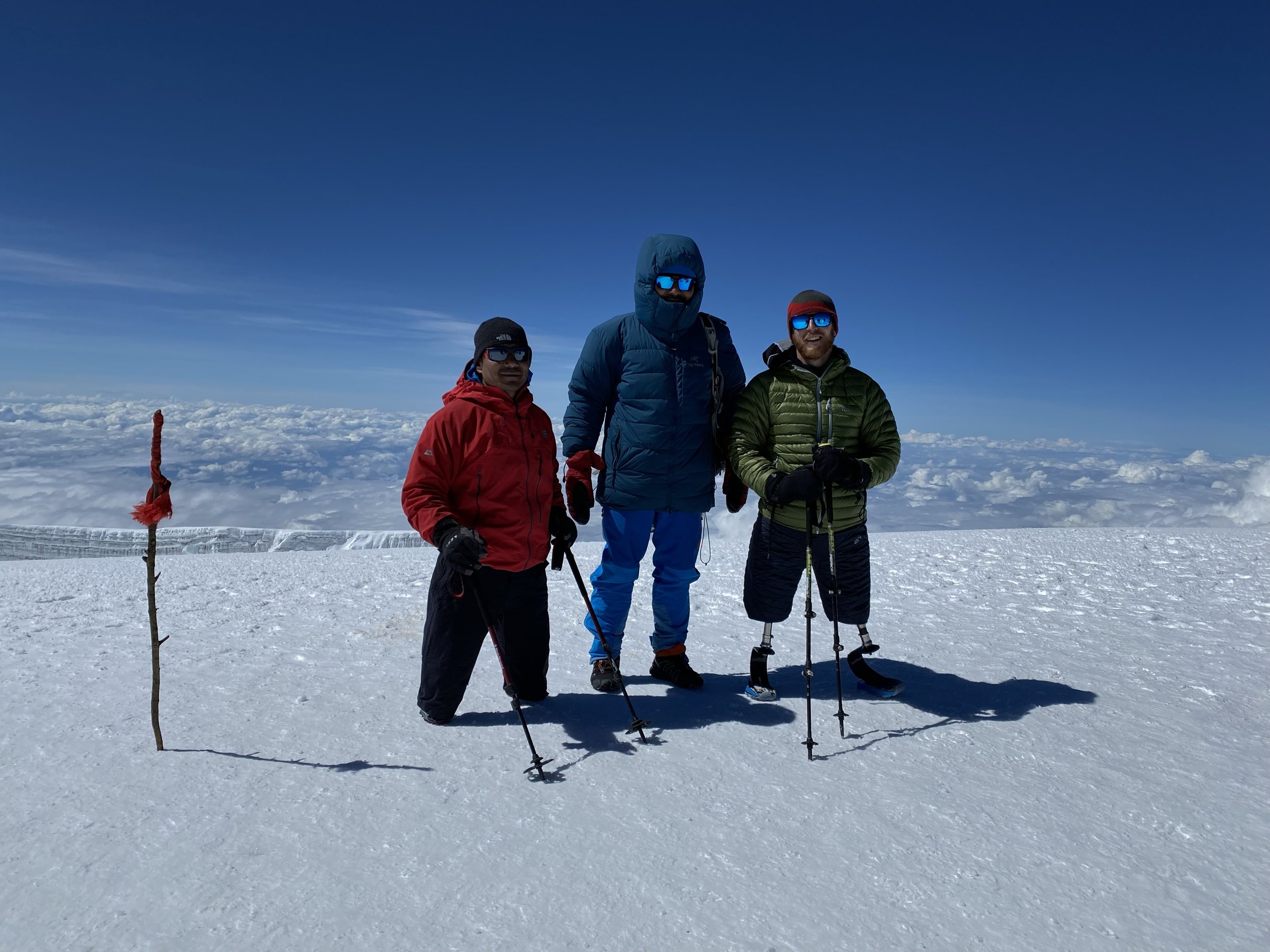Mont Blanc 4810m
August 2019
As Justin was recovering from his most recent surgeries he was finally on his way to beginning his journey to inspire the world. The first challenge he set his sights on was to reach the summit of the highest peak in Western Europe. Standing at no less than 4810m above sea level, Mont Blanc was no easy task for an able-bodied climber, let alone one without the use of their lower legs. Justin’s prosthetics had to be meticulously designed and constructed to enable the best chances of success. But, it was not only his prosthetics that would have to stand up to the test the mountain had in store for him. His body and mind had to operate in complete harmony if he was to reach the summit on his first attempt.
Training began in the UK with summits of local mountains such as Pen-Y-Fan, Scafell Pike, alongside sports climbing trips to the lake district and the peak district to keep his upper body strength and skills up to the required standard. Combined with regular strength and conditioning sessions and 10km walks around the countryside, Justin was now in a great position to attempt the climb.
Making their way up from the train station to the summit, and back to the train station, the trip took the team three days to complete. A fit and able-bodied climber would have this trip completed in two days but as this was the first serious challenge Justin had attempted, it was a prescribed safety precaution to plan for any extra days on the mountain. The last thing the team wanted to do was to rush and potentially risk making mistakes, which could prove to be catastrophic. Slow is fast in the mountains.
Justin and the team were the first double above-knee amputees to reach the summit of Mont Blanc with this level of amputation.
Justin is seen here using “Stubby” prosthetic legs while climbing the near-vertical section on Mont Blanc from the
Tête Rousse Hut to the
Refuge du Goûter. Justin and the team battled against a storm for over six hours to scale this part of the route.
After six hours of climbing the team are only a few hundred metres from the safety of the Refuge du Goûter. From there they rested for a few hours and then left to attempt the summit. From the Refuge du Goûter it took the team thirteen hours to reach the summit and make it back down to the safety of the hut. Exhausted and elated, they had done it!
Please head over to the “Field Notes” page where Justin describes in detail the climb from bottom to top, and of course, back down again.
Kilimanjaro 5895m
Jan 2020
Kilimanjaro summit.
After Justin’s recent success climbing Mont Blanc in the summer of 2019, Justin had a new sense of freedom after thoroughly testing his new stumps to their limits and he was now looking to further his mountaineering experience by taking on another big challenge. This time, the tallest free-standing mountain in the world: Kilimanjaro, was the next target in his sights.
This climb would be different in many ways, the prosthetics he would mostly be utilising would be his daily walking legs: Ottobock X3. They are heavy and occasionally cumbersome in comparison to the much shorter and lighter “Stubbies” he used for the majority of the Mont Blanc ascent. This presents a whole plethora of further challenges when covering the longer distances needed on the African giant. With added weight comes more energy expenditure, with rubs and sores on the stumps with the increased leverage the prosthetic places onto the residual limb. The prosthetic leg is attached to a socket which is made from carbon fibre infused with resin to give it strength comparable to aluminium. They are extremely lightweight and tough.
To enable full control of the prosthesis, the socket must cover as much of the residual limb as possible, but without restrictions on movements such as stepping up or over obstacles. However, if the socket is not a perfect fit it will collide with the limb, hip, or groin area. This isn't too much of an issue when walking around on a generally flat area with no need to raise the knee above the hip.
Once the prosthetic is needed to step over or up an incline this is where the socket can become an issue; the socket collides with the hip section and as the ascent is attempted, it will either push the leg off or force the user back down the hill as the leg cannot be extended without damaging the hip. (Imagine strapping a metal rod onto the front of your leg and attempting to climb a set of stairs. You cannot bend your knee; so what could you do? You have to step back and attempt to step up using a straight leg. The metal rod might dig into the top of your thigh area, causing a wound.
It was crucial for Justin to visit his limb centre numerous times in the months leading up to the climb. The team worked tirelessly and with limited notice each time.
Without the team, there is no way Justin would be able to attempt such challenges. They were always at the end of an email to facilitate all his needs.
Once the main issue of being supplied with sockets suitable for the climb was facilitated, it was then time to head out to Africa and put all the previous months of hard work to the test.
Please head over to the “Field Notes” page where Justin describes in detail the climb from bottom to top, and of course, back down again.





